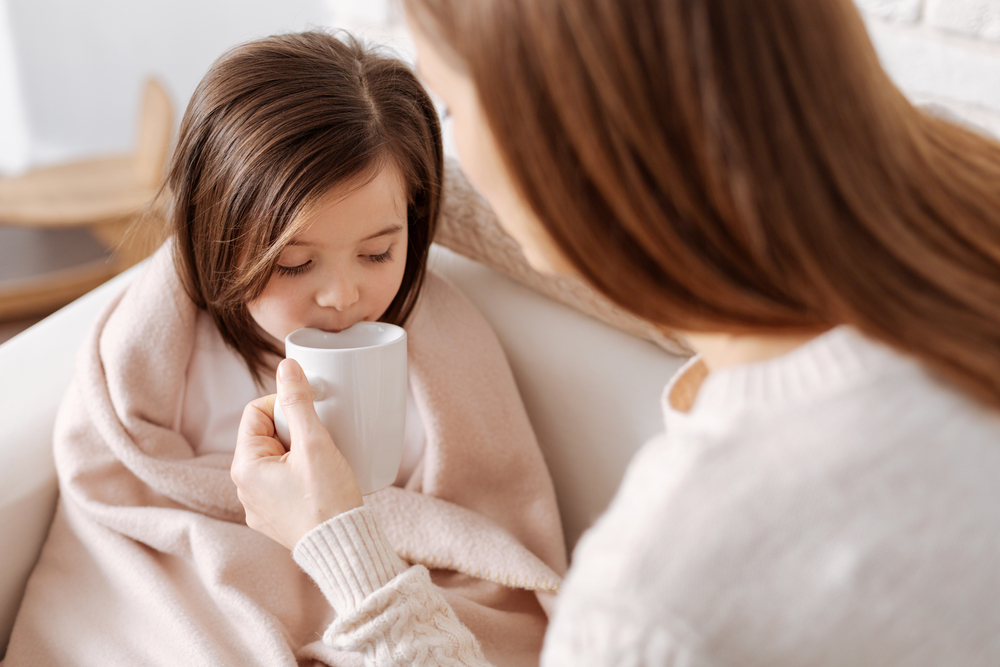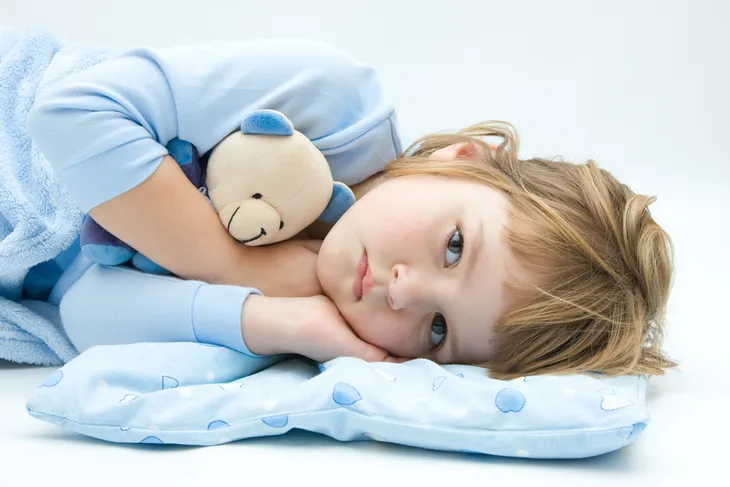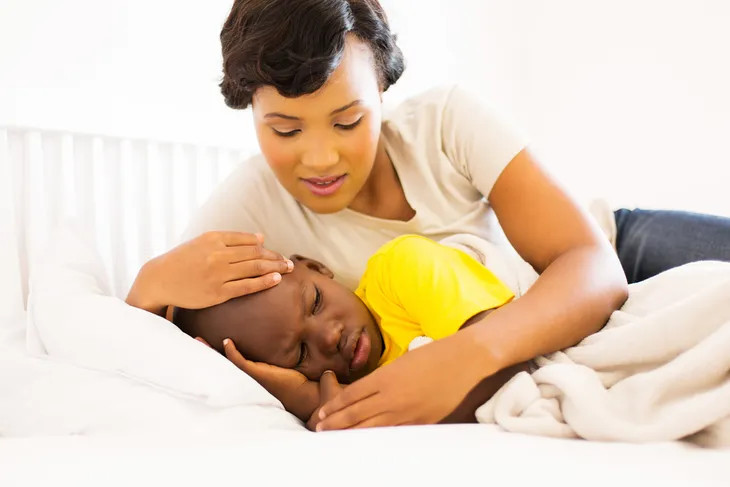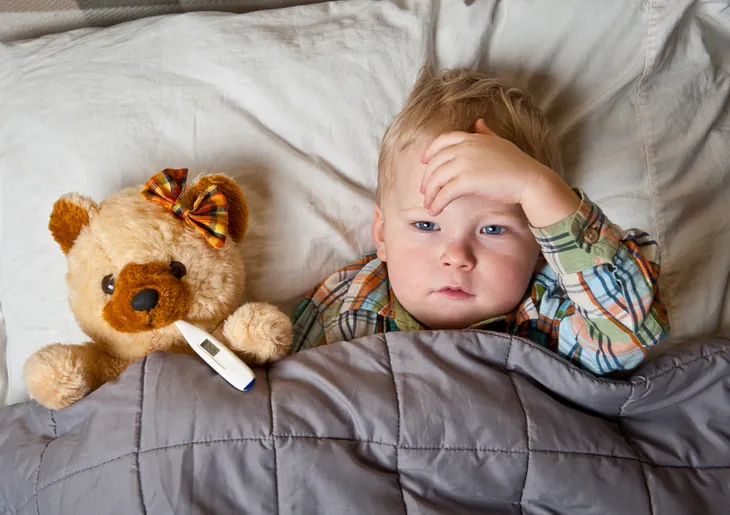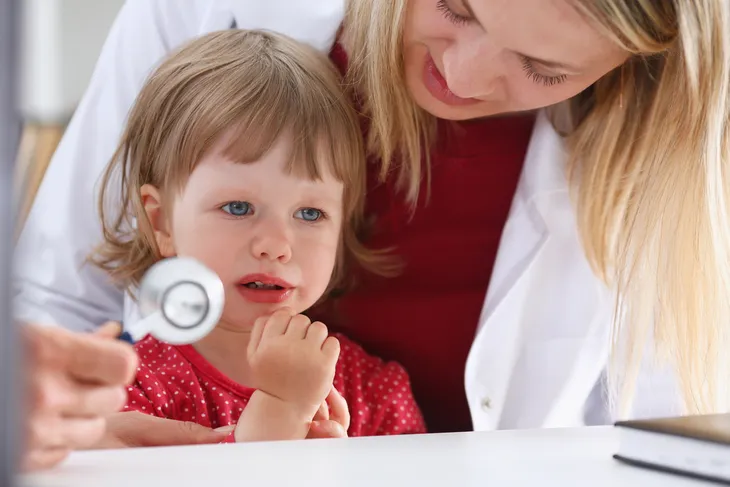The flu is rarely fatal for the average healthy person, but for those with a weaker immune system like the elderly and children under the age of five, it can be dangerous. Especially for those who are not vaccinated.
According to the Centers for Disease Control and Prevention (CDC), any child showing severe signs of the flu should go to the doctor, but it can sometimes be hard to tell whether or not a child is suffering from the flu, a cold, or the severity. To help parents distinguish whether or not their child has the flu and if it’s serious, here are 12 common signs to watch out for…
High Fever
One of the most common signs to watch for is a persistent high grade fever that does not subside. According to the New York Times, it will be a fever that will “abate only to flare up again after the child seems to be over the worst of the illness.” WebMD lists a high grade influenza fever as up to 104 degrees fahrenheit (call the doctor if a child under 3 months has a fever, as it can be a sign of a dangerous illness). If you do not have a thermometer, use your hand to check how warm their face feels. If they feel warmer than normal with flushed cheeks, are sweating or even shivering, they most likely have a fever.
When a child develops a high grade influenza fever the most important thing to worry about is time. Time is of the essence because a persistent or recurrent fever means the child has developed a complication from the flu, such as pneumonia or another inflammatory response. If this happens, parents must seek medical attention as soon as possible.
Decreased Appetite
It can be tricky to diagnose the flu in young children who cannot articulate what they are feeling. A great way for parents to tell if their child has the flu is whether or not they are eating or drinking, or if they’ve become less active. This is especially important to diagnose because a child with the flu can become easily dehydrated which is a serious complication of the flu.
“Having high fever increases the body’s metabolic demand, so this means children need more energy and hydration than usual, which is difficult when kids are sick and don’t want to eat or drink,” said David Mathison, MD, Mid-Atlantic regional medical director to Reader’s Digest. Dehydration can lead to hospitalization.
Timing
One of the biggest distinguishers between the common cold and the flu is timing. A simple cold tends to come on very gradually while the flu is very sudden. The New York Times chatted with Dr. Flor M. Munoz, associate professor of pediatrics and infectious diseases at Baylor College of Medicine in Houston, who said: “The trick with the flu is that it happens very quickly. You have to be really paying attention. Things can progress within 48 hours or so.”
When it comes to the flu, a fever will typically last three to four days. In most cases, a child with the flu should gradually improve over the course of a week even though some of their symptoms might persist for longer than that. But if the symptoms do not get better or get worse then it’s time to seek out medical attention.
Unusual Behavior
One of the easiest signs of whether or not a child is suffering from a severe illness like the flu is unusual behavior. Extreme fatigue is an early symptom of the flu. For example children with a cold will usually still have the energy to play outside and keep up with their usual routine, whereas a child with the flu will be very tired and maybe even bedridden.
In addition to fatigue, if your child seems extremely irritable that could also be a significant clue as to whether or not they are suffering from extreme symptoms of the flu. “Many parents will say that they knew their child wasn’t feeling well because he or she was fussier or sleepier than usual, or weren’t as hungry as usual,” said Christina Johns, MD, senior medical advisor at Children’s National Health System to Reader’s Digest.
Respiratory Symptoms
What comes after the fever is typically a slew of respiratory symptoms like a runny or stuffy nose, a sore throat, dry cough, and chest discomfort. These are the symptoms that are often confused with a cold.
Aside from checking for a fever, the best way to differentiate is to check how severe these symptoms are. In a cold they will be mild or moderate, whereas with the flu they are typically quite severe. A persistent dry cough could be a sign of the flu. If this cough is accompanied by wheezing, take your child to see a doctor. In addition to this, the American Academy of Pediatrics say that as the illness progresses, these symptoms will often worsen.
Upset Stomach
According to the CDC, children are more likely to experience an upset stomach which leads to vomiting, nausea, stomach pain, and diarrhea. As previously mentioned, it’s important to keep children who are suffering from the flu hydrated because frequent vomiting and diarrhea can lead to dehydration which is a serious complication from the flu.
Healthline advises parents to feed children sports drink juices, electrolyte replacement drinks, fruit juices, caffeine-free teas and sodas, and broth. Warm drinks in particular can ease a sore throat and dry mouth.
How Does Your Child Feel?
Tylenol created a chart for parents to read in order to tell whether or not their child is suffering from the cold or the flu. One of the blocks includes how the child may feel and lists flu symptoms as: “a younger child generally seems sick, fussy, sleepy, and less hungry than normal.”
In addition to this, an older child may “be very tired and uncomfortable. They may complain that their throat hurts, and may refuse food and liquids because their throat may hurt more.” In opposition to this, the common cold might have similar symptoms but much, much less severe. Instead of refusing to eat as they would with the flu, with a cold they might complain their nose is stuffy and simply eat less than usual.
Headache and Body Aches
Another big differentiator between the common cold and the flu is severe achy muscles and a headache. Headaches can also be a common symptom of a cold, but similarly to all other symptoms, if it’s much more severe it’s probably the flu.
Body aches are one of the best indicators of the flu, but are often overlooked in children because parents might believe they are a result of physical exertion. According to Parenting Healthy Babies, these aches commonly occur in the back and legs and they can sometimes be accompanied by the chills.
Trust Your Instincts
Dr. Joshua Schaffzin, a pediatric infectious diseases physician and director of infection, prevention and control at Cincinnati Children’s Hospital, told ABC News that parents should always listen to their gut instincts when their child falls ill. “Classic flu feels like you’ve been hit by a truck because it’s abrupt onset, high fever, cough, sore throat and all over body aches. It’s very striking for parents because their kid is running around and all of a sudden they don’t want to get out of bed.”
He added: “If a child comes home with a fever and isn’t feeling well, it’s not necessarily a time to panic. You do what you normally do. Parents take great care of their kids and [pediatricians] trust in that ability and knowledge and your keen sense of what’s normal and not. If parents have a gut sense that something is not quite right, it is perfectly reasonable to call your doctor. If the parents feel comfortable managing it at home, then that’s great.”
Emergency Signs of Flu
The flu is rarely deadly for the average healthy individual. It can be more dangerous for those with a weaker immune system like the elderly, children under the age of 5, or those in a high risk group (asthma, congenital heart issues or lung issues). CDC advises parents not to take their child to the emergency room unless they are showing severe signs of the flu. Typically a child should be able to get better on their own with the right treatment and care. You can always consult your doctor instead of rushing to the emergency room.
It’s easy for a parent to worry about their child, but doctors advise parents not to panic at the first signs of illness. There is a difference between typical symptoms and emergency warning signs. Here are a list of emergency warning signs listed by the CDC: fast breathing or trouble breathing, bluish skin color (which is usually most noticeable around the lips), not drinking enough fluids, not waking up or interacting, being so irritable that the child does not want to be held, symptoms that improve but then return with fever and worse cough, fever with rash, being unable to eat, trouble breathing, no tears when crying, and significantly fewer wet diapers than normal.
Differences Between Children and Adults
There are many similarities between adults and children when it comes to the flu. We all contract the flu the same way, and exhibit many of the same symptoms, but there are a few key differences that can help when trying to come up with a diagnosis. According to CaringForKids.org, there are four main differences in flu symptoms when it comes to babies, children, and young adults.
When it comes to babies, especially newborns, they only show one symptom which is a high fever. This is typically a fever that cannot be explained for any other reason. Similarly, young children may exhibit a temperature of over 39.5 degrees celsius and febrile seizures (convulsions). Young children will also experience an upset stomach with pain, vomiting, diarrhea, earaches, and red eyes. It’s also not uncommon for them to have severe leg or back pain which is caused by muscle inflammation.
Typical Symptoms
While there are a few differences between adults and children when it comes to flu symptoms (which we will get to next), for the most part they will experience the typical influenza symptoms which include sudden fever, chills and shakes, headache, muscle aches, sometimes vomiting and diarrhea, stuffy nose, extreme fatigue, dry cough and sore throat, as well as a loss of appetite. The flu affects each child differently, but they will often experience at least three or more of these symptoms.
Their symptoms will begin to show about two days after they’ve contracted the virus. According to KidsHealth.org, when it comes to infants, a parent can tell whether or not their baby has the flu if all the sudden they seem extremely irritable and fussy, or just “not look right.” If the child is under the age of 5, parents must watch them extremely closely to make sure their symptoms to not get any worse.
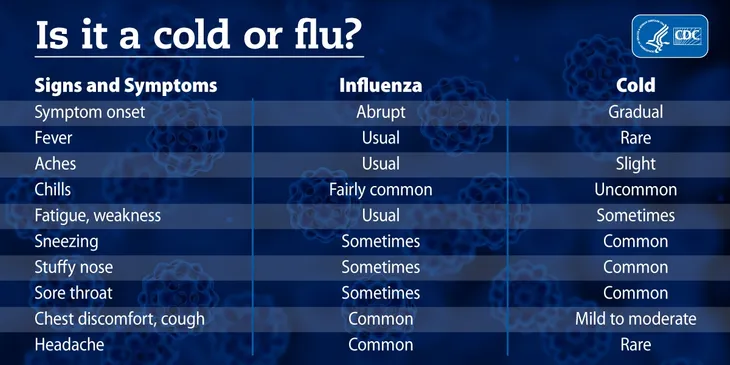 Centers for Disease Control and Prevention
Centers for Disease Control and Prevention